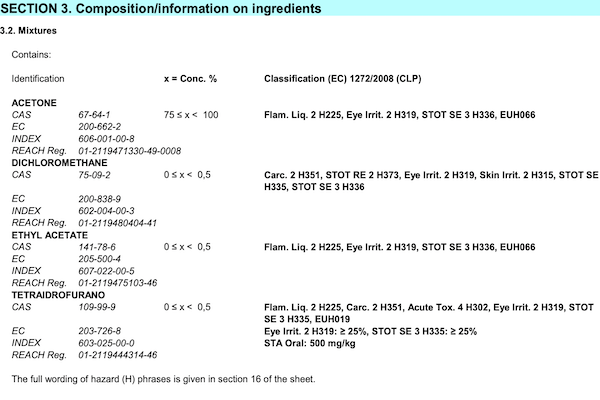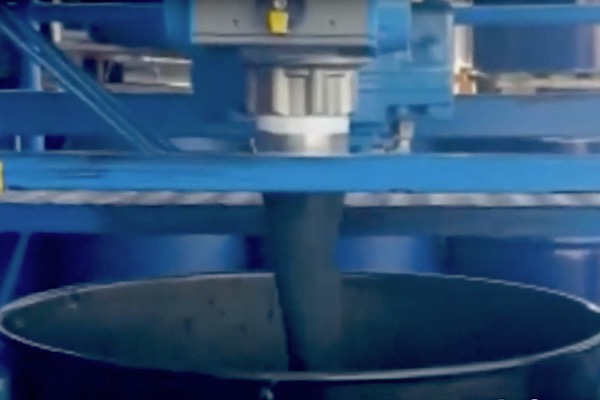Solvent Safety Data Sheets

When purchasing and using solvents, you’ve likely across the safety data sheets associated with them. Often, these documents are seen as a bureaucratic burden or an unnecessary element. However, it’s important to understand that the information contained within can be quite useful. They are particularly valuable when deciding to regenerate dirty solvent for reuse in the production process.
It’s crucial to understand that not all solvents are the same, which is why you sometimes hear, “We used to have a distiller, but it didn’t work.” In such cases, it’s important to assess whether the inefficiency lies in the distiller itself or in the specific characteristics of the solvent used. Perhaps the solvent distillation unit supplier didn’t sufficiently explore your distillation needs and made a hasty sale.
Meanwhile, you’ve continued to dispose of the dirty solvent, thus forgoing the numerous economic benefits of internal regeneration, as many other companies do.
It’s important to emphasize that the solvent regeneration process requires a careful evaluation of the information contained in the safety data sheets. This allows for the adoption of proper precautions and the appropriate configuration of the machine for effective and safe results.
Safety Data Sheets (SDS) are the most important technical document to provide detailed information on chemicals and their mixtures. These documents contain essential information on the physicochemical, toxicological properties, and environmental effects of substances, as well as necessary instructions for the correct and safe handling of products.
Main functions of safety data sheets
- Allow employers to identify if dangerous chemical substances are being handled in the company, thus assessing potential risks to worker health and safety.
- Provide users with the necessary information to adopt adequate measures for health protection, environmental conservation, and workplace safety.
Ideally, safety data sheets should always be issued by chemical product suppliers. However, we know that this does not always happen in practice. Therefore, it’s essential to ensure the presence of updated safety data sheets for each solvent used in the company. These documents can be requested from your supplier.
The format of the safety data sheets is defined in the REACH regulation and includes 16 mandatory sections.
- Substance/preparation and company/enterprise identification
- Hazard identification
- Composition/information on ingredients
- First-aid measures
- Firefighting measures
- Accidental release measures
- Handling and storage
- Exposure controls
- Physical and chemical properties
- Stability and reactivity
- Toxicological information
- Ecological information
- Disposal considerations
- Transport information
- Regulatory information
- Other information
The distillation unit must be correctly designed to handle the characteristics of your solvent. This is also essential for a safe and efficient distillation process.
The sections of the safety data sheet we consider before making a technical-commercial proposal are mainly Section 3 and Section 9.
Section 3 provides detailed information on the chemical product’s composition, in our case, a solvent. This data is generally presented in table form and includes the substance’s name or commercial name, along with other identifiers such as the CAS number, registration number, and classification. For mixtures, the concentration percentage or range of the constituents is indicated.
Section 9, on the other hand, provides information on the basic physical and chemical properties of the substance or mixture that are relevant for classification and associated hazards. This information can include appearance, odor, pH, boiling point, and other parameters.
For a substance, the boiling point can be found in Section 9, indicating the temperature at which the substance begins to evaporate. For a mixture, it’s necessary to look up the specific data for each substance within the mixture using the “CAS number” or the component name listed in Section 3.
Therefore, the data that must be initially evaluated include the type of solvent, the boiling point of each component, and the concentration percentage in the mixture.
The vacuum generator
Analyzing the data obtained from the solvent safety data sheets, you can determine if a vacuum generator is necessary to regenerate your dirty solvent. If a solvent has a boiling point above 150°C, it’s advisable to equip the distiller with a vacuum generator to reduce the solvent boiling temperature.
The stainless steel condenser
Secondly, based on the type of solvents, you can evaluate whether it’s preferable to install a copper or stainless steel condenser. Typically, a stainless steel condenser is used in the distillation of chlorinated solvents (for example, dichloromethane) and solvents containing amines, as these can chemically attack the copper of the standard condenser.
It’s important to consider that a copper condenser allows for better thermal exchange compared to stainless steel, so if stainless steel is not essential, the use of copper is preferred to ensure the best performance of the machine, especially during the summer months.
The choice of vacuum generator and condenser is crucial to ensure an efficient and reliable solvent distillation process, thus optimizing the overall performance of the machine.
The multi-set-point
In case you need to regenerate mixtures composed of solvents with significantly different boiling points, it’s advisable to program the distillation cycle with differentiated temperature steps. This approach will allow you to obtain a higher quality distillate. In such a case, make sure that the distiller is equipped with this function.
Distiller features
With the information provided, you are able to independently evaluate the features of the distiller. However, if you still have doubts, I suggest contacting us for a consultation.
Furthermore, keep in mind that we are capable of conducting specific distillation tests using your solvent. You will have the opportunity to personally attend the distillation and evaluate the feasibility and yield of the process. We have machinery dedicated exclusively to such tests, which allow us to determine the feasibility of the project and calculate the return on investment.
Our interest, as well as yours, is to offer you the most suitable solution for your solvent and operational needs, allowing you to perform distillation effectively and decisively. However, to achieve this, it’s essential to share all the essential information from the start.
“But the others didn’t ask me for this information!” How is it possible to propose an effective system without knowing the characteristics of the product to be treated? We work according to procedures that we continue to refine thanks to the experience gained over the years, ensuring you reach your set goals with certainty.
If you want to learn more about how solvent regeneration can bring economic benefits to your company, do not hesitate to contact us for personalized consultancy.







